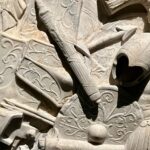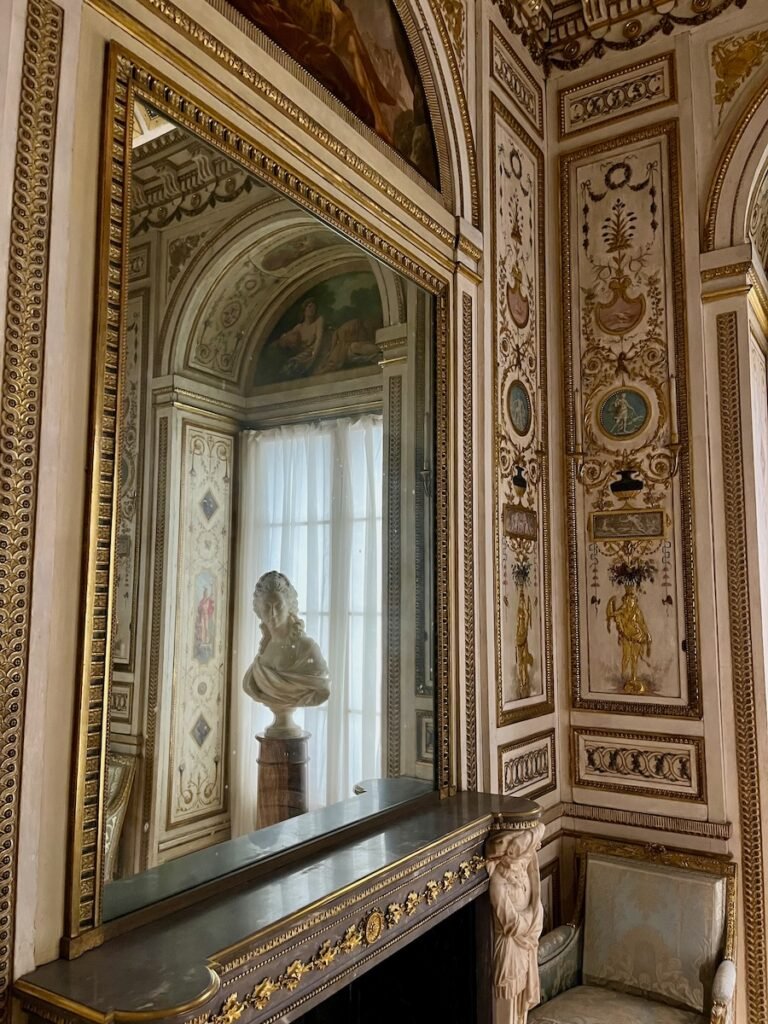
The first instalment of some much-belated travel photo blogging from our UK trip in May-June 2024. Above, the Sérilly Cabinet, a private room built for the lady of a Parisian town house around 1778, and now relocated in its entirety to the V&A.
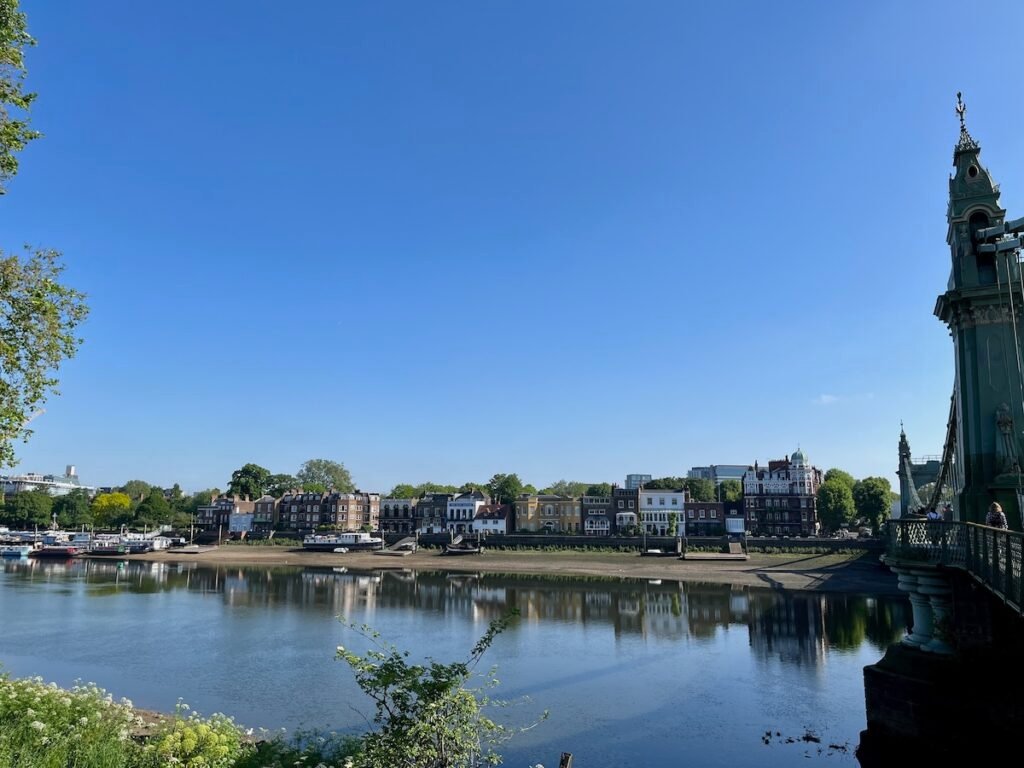
Completely unoriginally, we started our trip in London. Slightly more originally (for us), we stayed in Hammersmith, a part of town neither of us knew very well but which turned out to be a good choice, having good transport links while not being in the centre. London really turned on the weather for us on our first day, as you can see from the above photo taken from the opposite side of the Thames from Hammersmith, next to Hammersmith Bridge. Of course, it was grey for most of the next two or three weeks – when it wasn’t raining, that is!
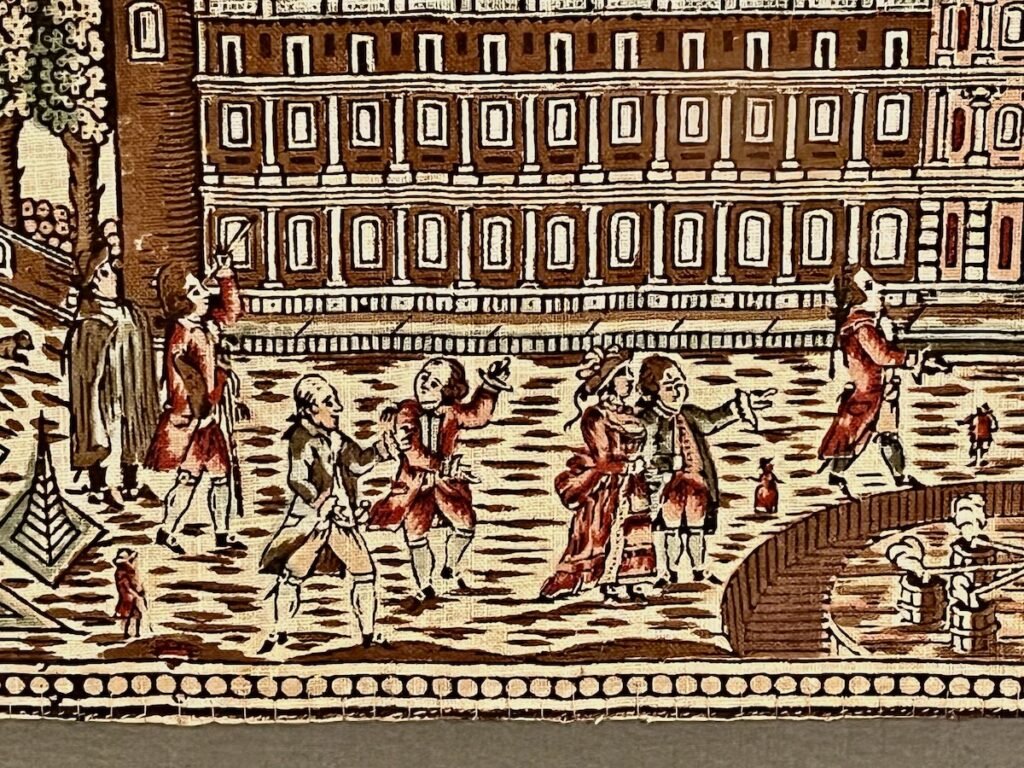
The V&A had a small but interesting display relating to the first balloon flights in France in 1783. This charming detail from a (very large!) handkerchief made in Alsace depicts a number of wealthy people enjoying the aerial theatre of a balloon ascent (not shown here), along with some oddly tiny people (children? the poor?).
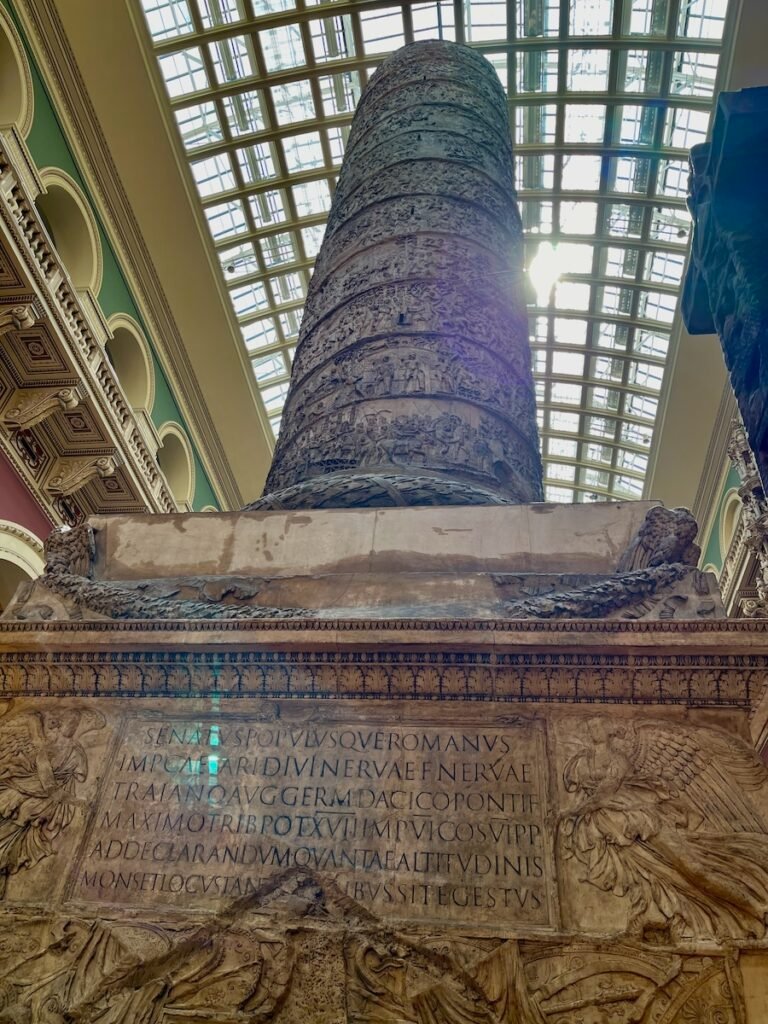
My absolute favourite part of the V&A on my previous visit (which I had somehow forgotten about completely this time around!): the Cast Courts, opened in the late 19th century as a way of providing access to important sculptures and friezes to art and architecture students without them having to travel halfway across the world. The way to do this, apparently, is to make exact, life-size reproductions of (among many other things) Michelangelo’s David, the Gates of Paradise in Florence, and (above) Trajan’s Column – which, because it’s so tall, you need to chop in half. It’s a stunning and surreal collection.

At the Science Museum: the one and only (literally) H.P.39 Gugnunc.
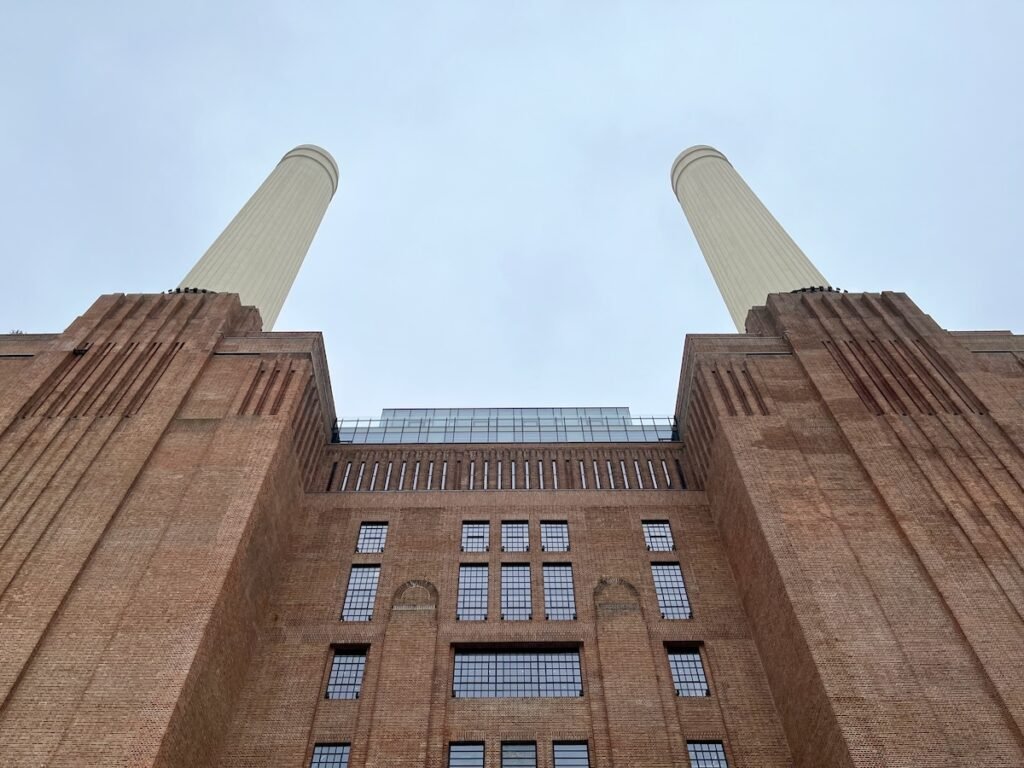
On our friend Dan’s recommendation, we went and had a look at the finally-refurbished Battersea Power Station, variously described as ‘London’s most exciting new shopping and leisure destination’ (the official website) or ‘soulless’ (Dan). It’s technically possible that they’re both right. Either way, it’s still undeniably magnificent from the outside.
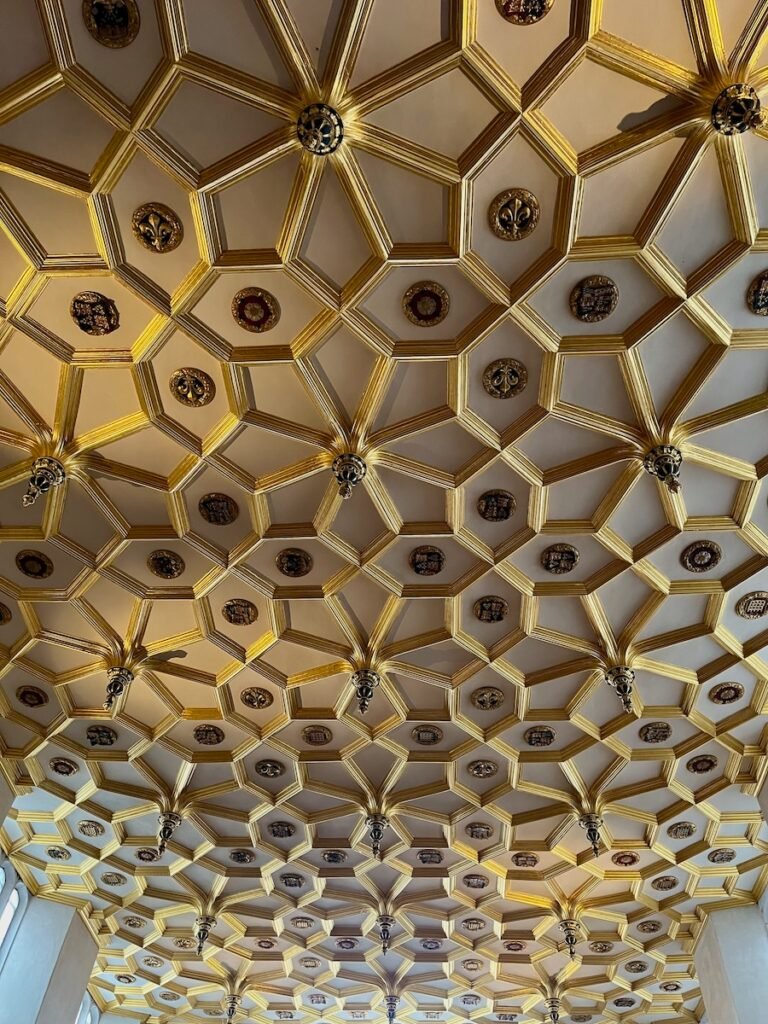
Even constant drizzle could not dampen our spirits (well, maybe it did, a little) at Hampton Court Palace. I was a bit sad that the Tudor kitchens no longer seem to be in operation, but there were plenty of compensations, among them, the gilded ceiling of the Great Watching Chamber.
After the Palace, we took the overnight Caledonian Sleeper to… Preston? We were supposed to wake up as the train was rolling through the Scottish Lowlands on its way to Glasgow, but there was flooding overnight at Carlisle so we could not proceed past central Lancashire. So much for the romance of rail travel! Still, the company did get us to our destination, if by minibus.

Neither of us had been to Glasgow before (which was partly why we went there). I think it took us both a little while to understand how it worked as a city, but once it clicked we really enjoyed our time there. One thing we were both drawn to was the continuing presence of Charles Rennie Mackintosh and his work. This is the House For An Art Lover, inspired by a design by Mackintosh and his wife, Margaret MacDonald, more than half a century after their deaths.
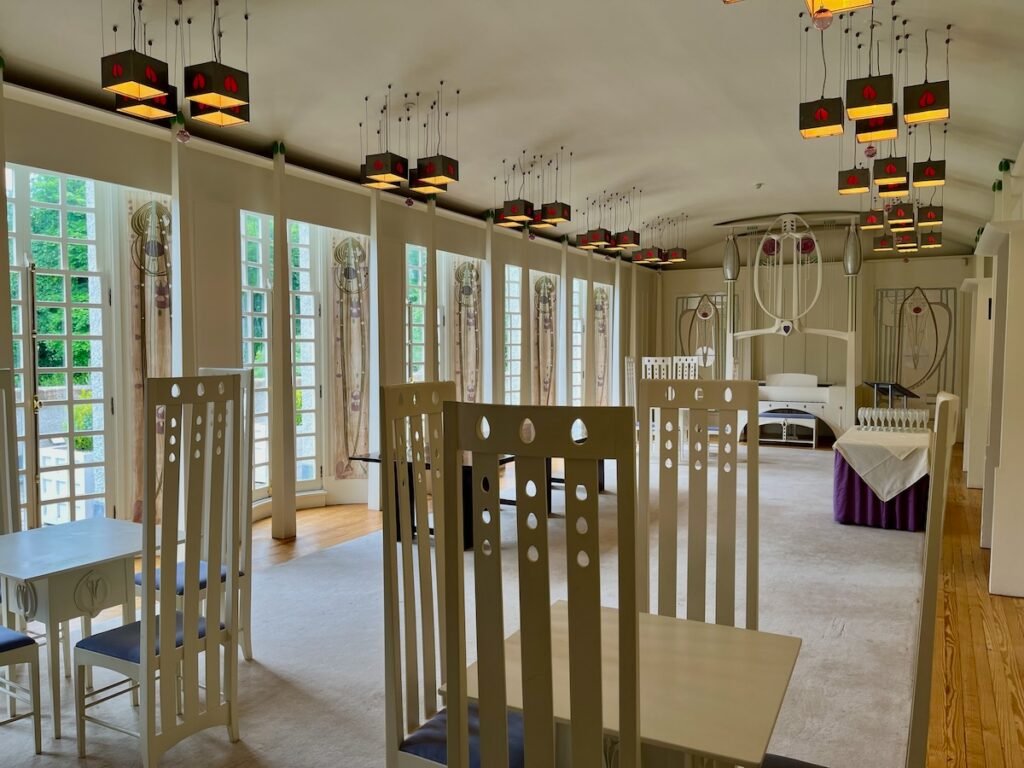
The interior design and furniture in the House For An Art Lover has also been chosen to reflect the Mackintosh style, which we kept encountering all around Glasgow, in galleries, museums, and even cafes.

This is not one of those cafes, but it did have a rather nice, if rather random and somewhat approximate, model Waco F series (judging from the aircraft registration) hanging from the ceiling.
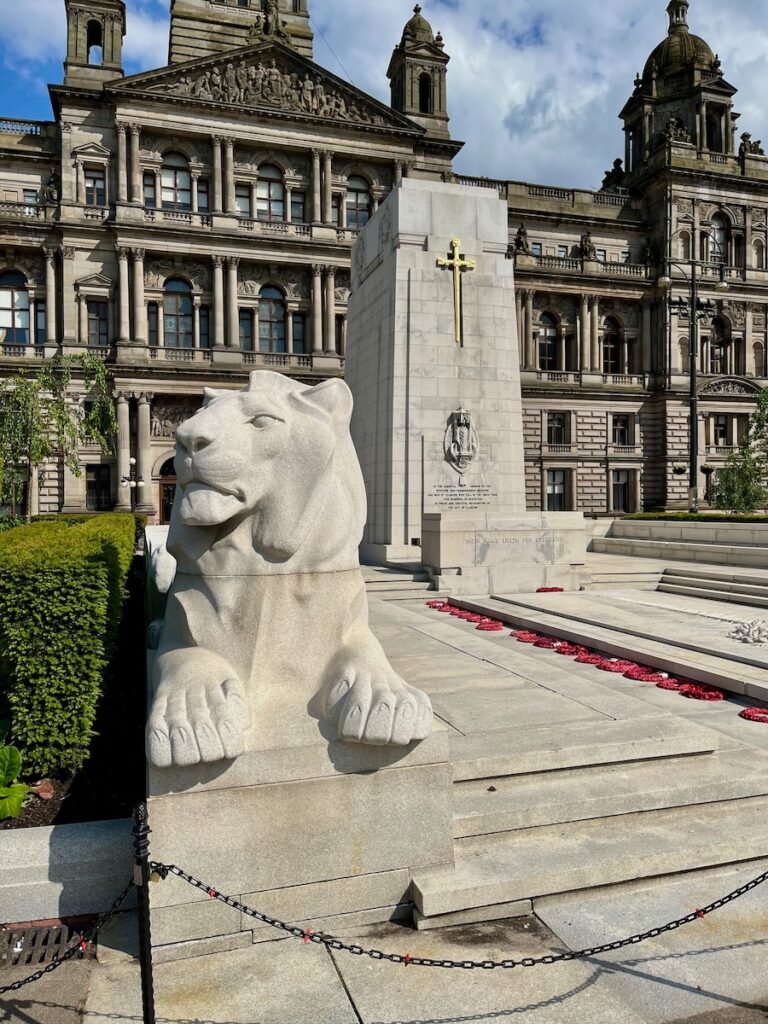
The Glasgow Cenotaph.

The Govan Cross, one of the mysterious and slightly spooky Govan Stones kept within in Govan Old Parish Church. It would originally have been a free-standing cross, built somewhere between the 9th and 11th centuries AD when the area was part of the Kingdom of Strathclyde.

Equestrian statue of Arthur Wellesley, 1st Duke of Wellington, with his iconic traffic cone hat and less well-known scarf.
Next stops: York and Liverpool.
![]() This work is licensed under a Creative Commons Attribution-NonCommercial-NoDerivatives 4.0 International License.
Permissions beyond the scope of this license may be available at http://airminded.org/copyright/.
This work is licensed under a Creative Commons Attribution-NonCommercial-NoDerivatives 4.0 International License.
Permissions beyond the scope of this license may be available at http://airminded.org/copyright/.


